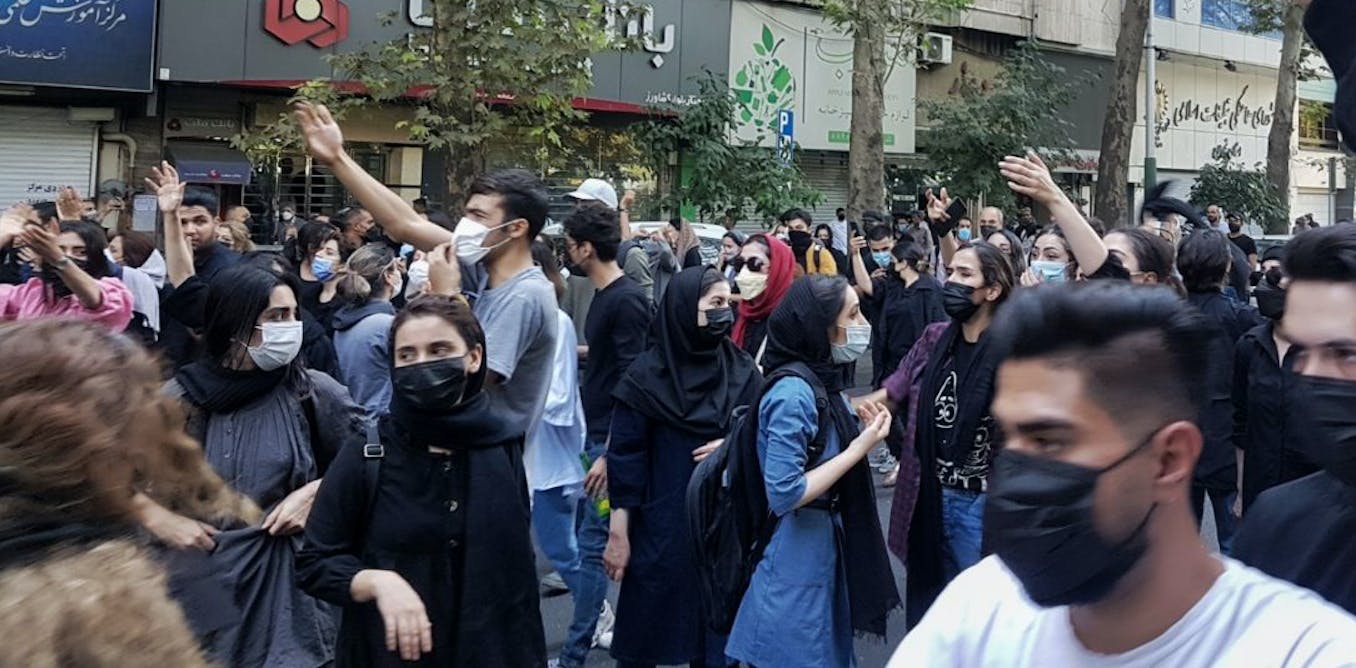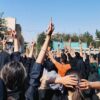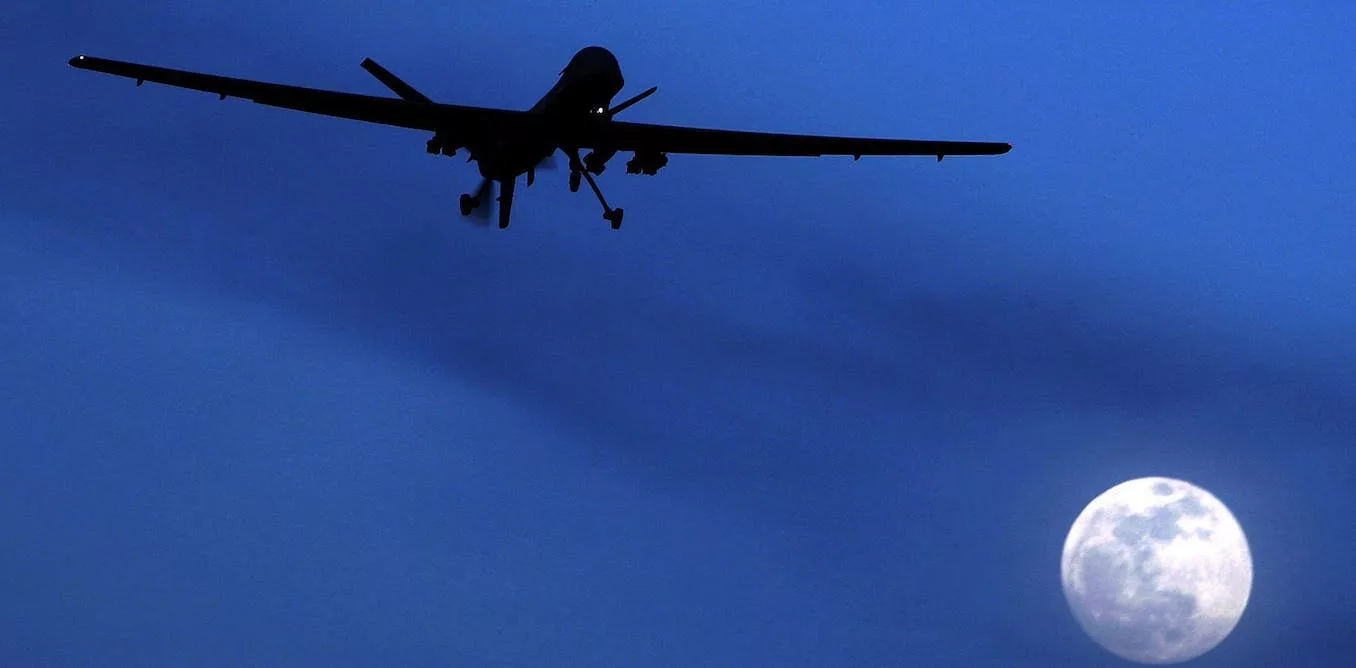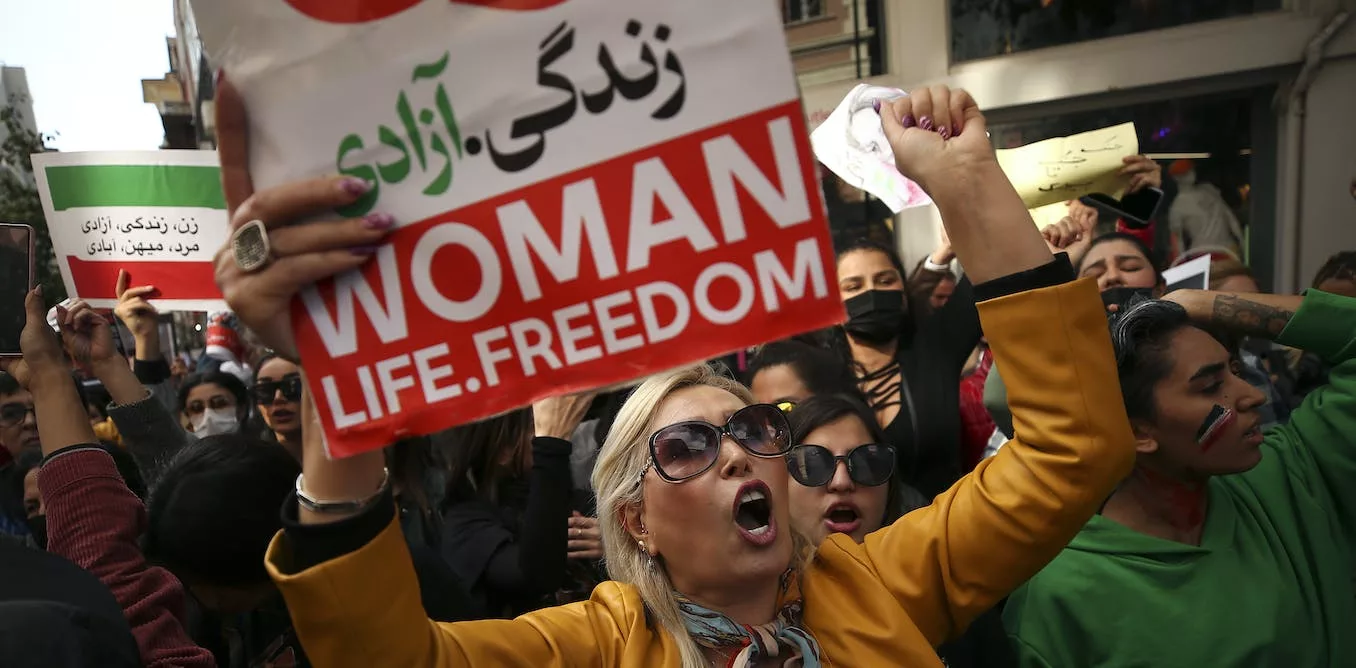Written by Arshin Adib-Moghaddam, Professor in Global Thought and Comparative Philosophies, SOAS, University of London
A broadcast featuring supreme leader, Ali Khamenei, in a meeting with state officials, was replaced by images of protesters who have died in the violent crackdown on dissent in Iran. The popular chant, “woman, life, freedom”, which has become the slogan of the protests, had been incorporated into a song, an excerpt of which was broadcast as were calls for viewers to “join us and rise up”.
It is estimated that 185 people, including at least 19 children, have been killed since news of Amini’s death emerged on September 16. It has been reported that 14 members of Iran’s security forces have also been killed.
The “hijab protests” have grown from the outrage of Iranian feminists at the country’s oppressive morality police to a general expression of resistance and discontent with the Islamic Republic itself. There have been reports of general strikes in several cities.
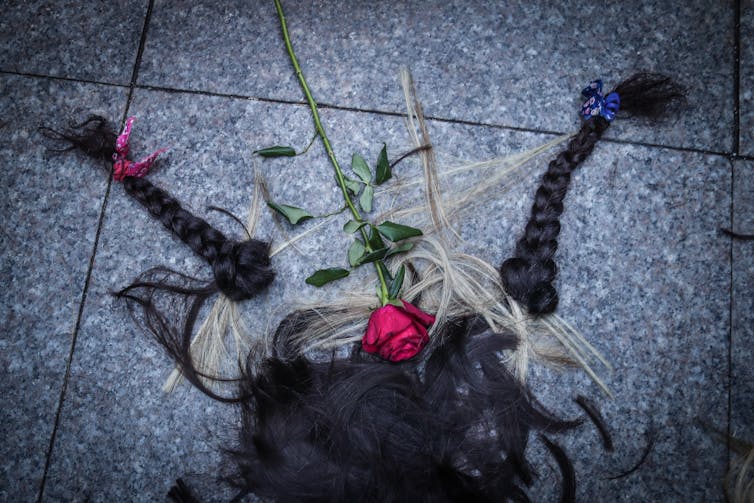
EPA-EFE/Sedat Suna
There are parallels with the 1979 revolution that toppled the last shah of Iran. Women played a major role in that uprising, too, wearing the hijab to show their rejection of the ban on the head covering decreed by the shah’s father in 1936 – later overturned, but still a symbol of the repressive monarchy.
But, if the 1979 revolution delivered the long-sought-after independence from western imperialism, it also delivered the people of Iran to an authoritarian brand of patriarchy. And the hijab, which many women had taken to wearing in defiance of the shah’s regime, quickly became a tool of the Islamic Republic’s oppression of women.
But the rise of the Islamic Republic’s morality police, enforcing gender separation in public, and increasingly in private, affected everyone’s freedom: men and women alike. As in 1979, protests have been fiercest in schools and universities, but there are signs they are spreading to a broader cross-section of society. Many people are angry at the regime’s handling of the economy in the face of western sanctions and the hardline government’s seeming incompetence in negotiating a deal with Washington that could lessen the impact of those restrictions.
This is not a revolution
I’ve been asked several times in the past three weeks the same questions as I was asked during the mass protests of 2009: “Is this a revolution? Will it bring down the regime?” My answer has to be analytical. In the so-called “Green Movement” of 2009, hundreds of thousands of Iranians took to the streets to protest the disputed re-election of Mahmoud Ahmedinejad. Then too, the killing of a young Iranian woman, 26-year-old Neda Agha-Soltan – who was shot during an anti-government protest – enraged the populace even further.
At the time, I wrote an article for The Guardian, which was given the headline: Iran: This is not a revolution. The article pointed out the differences between the mass protests that year and the revolution of 1979 that had toppled the late shah – not only the problem the protesters had in identifying a “bad guy” to blame, but also pointing out that the regime was open to a degree of flexibility and concession. The same headline could be used now to describe recent events. And here’s what my research suggests to me.
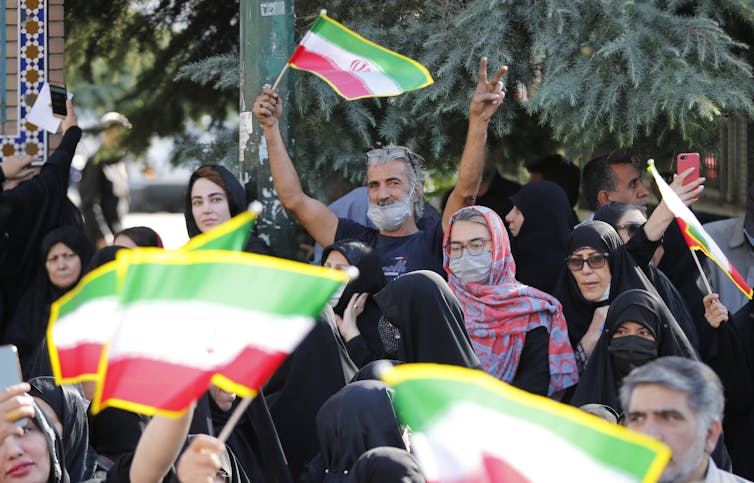
EPA-EFE/Abedin Taherkenareh
For a start, governments in general have become more adept at using technology to manage populations. There has been widespread use of social media in Iran, which has high internet penetration and a generation of tech-savvy youth learning how to use online tools to mobilise opposition. But the Islamic Republic is also adept at controlling cyberspace, even those who try to use virtual private networks and other technology used by Iranians to escape censorship.
And, unlike in 1979, there is no charismatic leader ready to assume the revolutionary mantle. This is, thus far, a movement without leaders – and revolutions tend to need a figurehead for whom people are prepared to take risks – a Lenin, Mao, Castro or, as in 1979, an Ayatollah Khomeini.
I must just add one caveat here. One of the main enforcers for the Islamic Republic is the Islamic Revolutionary Guard Corps (IRGC). If the IRGC decided to remain in its barracks or refused to fire on protesters if ordered, this could change everything. This refusal to cause further bloodshed would need to be widespread and not merely sporadic.
There is, so far, no indication that this is likely to happen. But the popular fury at the killing of Mahsa Amini – along with the deaths of several other young women for the crime of demanding justice and freedom – can only undermine the crumbling edifice of Iran’s increasingly unpopular theocracy.
This article is republished from The Conversation under a Creative Commons license. Read the original article.
